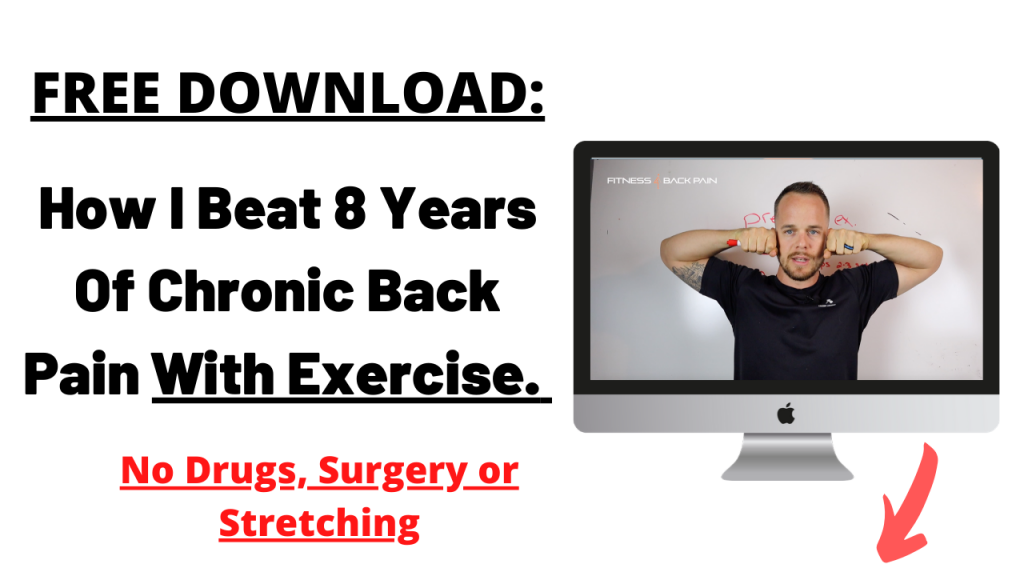Stop Stretching Your Tight Muscles: Do This Instead
We’ve got to get away from constantly stretching our tight muscles.
In fact, I would go as far as to say that stretching should be one of the last things you do if you’re dealing with any long-term muscle tightness or tension.
As much as you want to get your tight QL to release or Piriformis to relax. It might be time you abandon your quest to stretch your tight muscles and take a different approach.
In today’s video, I am going to break down why we should stop stretching our tight muscles and what you should consider instead.
Will Stretching Help With My Tight Lower Back?
When it comes to tight lower back muscles 90% of those who choose stretching as a solution see minimal (if at all) long-term relief.
A 10% success rate is enough for me to assume there are better solutions to tight muscles than simply stretching.
I know what you’re thinking…but William if I didn’t stretch my tight QL’s every morning then I would be in so much pain.
The issue I have with this is you shouldn’t have to stretch every morning.
Why have we been convinced that we need to constantly be tugging on our muscles for them to feel normal?
We can all agree that stretching “feels good” and even bring relief for a short time after.
The truth is if you’ve been in chronic pain you will know that the relief is short-lived and whatever pain you stretched away will be right back before you know it.
So no, stretching will not give you long-term relief from your lower back tightness. It may feel good while doing it but it will never deliver the relief you deserve and have been looking for.
How Do I Stop My Lower Back From Being So Tight?
There are a lot of layers to this topic and there are a number of reasons why your lower back constantly feels tight.
From the hip, these are the things I would look at first.
- How well you are recovering from your training.
- How much do you default to overextension and using your lower back muscles as your “core”
- Your history of lower back pain/tightness and treatment history.
- Current training demands and exercise choice.
- If you’re even active at all.
- Stress levels and how well you’re managing them.
We can then look at how well-balanced your program is and making any immediate changes to potentially free up tension.
The worst thing you can do is simply train through the tightness/pain or think yanking on these tight muscles is going to get them to chill out.
In fact, I give you 2 alternatives to stretching in the video above make sure you check that out!
I’ll briefly share them below!
Tight Low Back Relief Option 1:
Strengthen the opposing muscles. We often get caught up in treating the actual muscle that is tight when we should also be considering the muscles surrounding it.
In this case the opposing muscles.
These are also known as agonist and antagonist muscles.
For example: When the low back is constantly tight I would turn my attention to the strength and coordination of the anterior portion of the midsection. Asking myself how strong are the muscles that do the opposite job of the muscles that are tight?
This may take a little google searching to find out the opposing muscle groups but it’s a small obstacle to see the breakthrough you’re looking for.
Tight Low Back Relief Option 2:
Strengthening the tight muscle.
When it comes to persistent low back pain we often get sucked into neglecting the muscles that hurt.
Out of fear of making the pain worse we stop training them but continue everywhere else. Over the years this creates strength imbalances that could come back to bite you in the butt.
To hear more about these two options broken down check out this week’s video!
Why You Shouldn't Stretch For Lower Back Pain Relief
Why Are My Muscles So Tight Even After I Stretch Them?
Long story short, your muscles are still tight even after stretching them because stretching them is not what was needed.
Your body naturally wants to protect itself from danger.
Behind the scenes, your brain is constantly testing and regulating everything that is going on in your body at all times.
Due to your low back pain history, surgery, or injury your brain may think the lower back is in danger so to keep it safe it will trigger the muscles to tighten or stiffen to create what I call your protection mechanism.
This protection mechanism will continue to fire until it feels everything is A-OK and the low back is safe again. This may take a few days and often years considering most people will start chasing quick relief like stretching instead of getting to the root of the issue.
Learn My NO STRETCH Approach To Addressing Low Back Tightness And Pain Below

